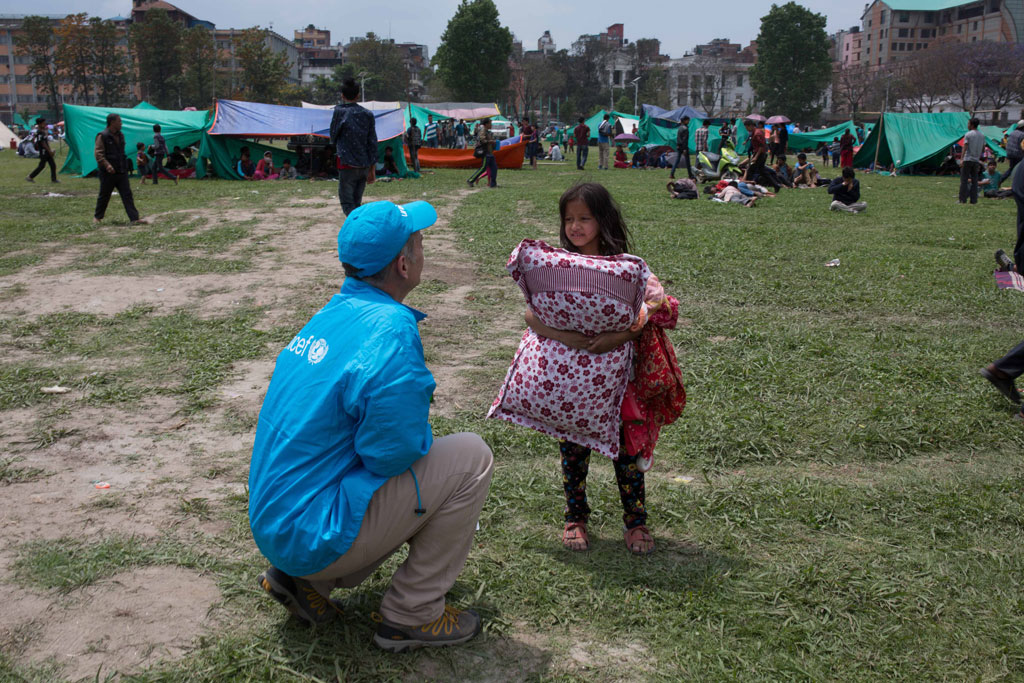
While Australians across the nation commemorated Anzac Day, the United Nations observed a minute’s silence for the devastating earthquake in Nepal. It was just over a year ago that a 7.8 magnitude earthquake and its 7.3 magnitude aftershock killed nearly 9,000 people, injured 22,000 and left nearly 3.5 million people homeless.
One year later, the country is still struggling to get back on its feet. Of the almost 800,000 buildings damaged from the catastrophic earthquake, hardly any have been rebuilt. The reconstruction project is expected to take years, however the people of Nepal have shown themselves to be incredibly resilient. This was particularly clear over the last winter and monsoon season, when temperatures dropped and heavy rains affected those still living in tents and makeshift shelters.
The United Nations has been present throughout, with agencies such as the UN Office for the Coordination of Humanitarian Affairs (OCHA) having already established offices in Nepal since 2005. Volunteers have worked tirelessly, while the world contributed over $USD4.1 billion in aid. The Word Food Programme (WFP) continues to provide support for those most vulnerable and has been working toward establishing emergency measures in case of future disasters. The WFP has been most effective in using food and cash to pay people for rebuilding critical infrastructure, while launching a three-year development programme for those most vulnerable, particularly female households and minority ethnic groups.
The state of Nepal’s rich cultural heritage continues to be of great concern in the aftermath. The UNESCO World Heritage sites of Kathmandu Valley were the backbone of the country’s tourism industry and many key buildings were lost to the quake. The Director of UNESCO’s head office in Kathmandu, Christian Manhart, had listed the extent of destruction in June 2015; “Half of the temples in Patan Durbar Square, eighty per cent of the temples and historic structures in both Bhaktapur and Kathmandu Durbar Squares… [and] the walls on two wings of the former Royal Palace in Kathmandu, which is now a museum, have totally disintegrated from the corners…” he said. The Director-General of UNESCO, Irina Bokova, working closely with the Minister of Culture, Tourism and Civil Abiation, Mr Ananda Prasad Pkharel, has since launched a rehabilitation project for the Kathmandu Valley World Heritage Site and Kathmandu is currently hosting workshops with professionals of museum and heritage preservation to set up systematic recovery efforts for rebuilding these important cultural monuments.
UNESCO is also coordinating with the Minister of Education of Nepal to promote the Joint Programme for the Empowerment of Adolescent Girls and Women, increasing education and literacy levels in some of the more remote and hard to reach areas of the nation. The United Nations Environment Programme has taken the opportunity to establish sustainable and green recovery across the country. UNEP supported the critical management of waste in the recovery process, while also sharing the best practices for managing landslides and continuously reviewing the state of environmentally sustainable reconstruction.
As with any emergency disaster, the goals are reconstruction and future precaution. Establishing emergency response processes can help to mitigate the devastating effects of natural disasters, particularly when early warning systems may not be possible.